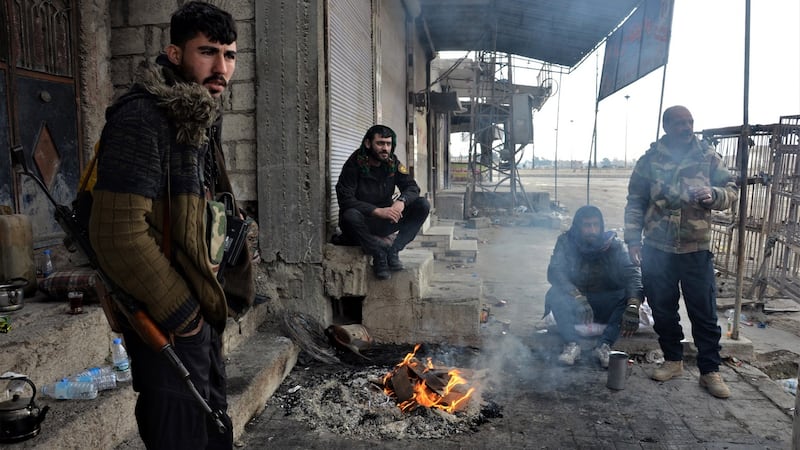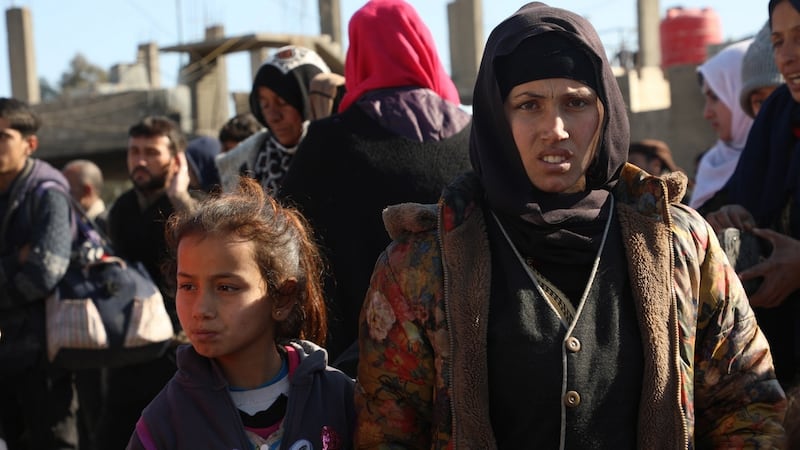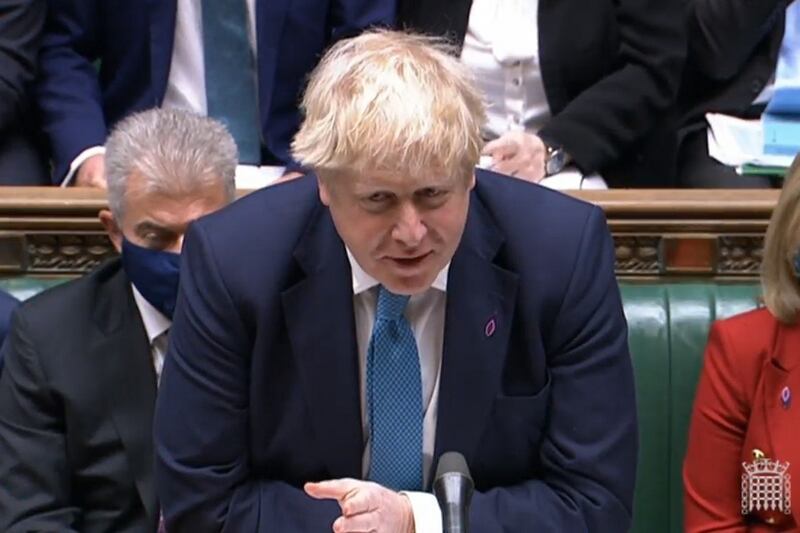An audacious attack on a prison housing thousands of former Islamic State fighters in Syria. A series of strikes against military forces in neighbouring Iraq. And a horrific video harking back to the grimmest days of the insurgency that showed the beheading of an Iraqi police officer.
The evidence of a resurgence of the Islamic State group in Syria and Iraq is mounting by the day, nearly three years after the militants lost the last patch of territory of their so-called caliphate, which once stretched across vast parts of the two countries.
The fact that Islamic State, also known as Isis, was able to mount these co-ordinated and sophisticated attacks in recent days shows that what had been believed to be disparate sleeper cells are re-emerging as a more serious threat.
"It's a wake-up call for regional players, for national players, that Isis is not over, that the fight is not over," said Kawa Hassan, Middle East and North Africa director at the Stimson Center, a Washington research institute. "It shows the resilience of Isis to strike back at the time and place of their choosing."
On Tuesday, fighting between a Kurdish-led militia backed by the United States and the militants spread from embattled al-Sinaa prison in northeastern Syria to surrounding neighbourhoods, swelling into the biggest confrontation between the US military and its Syrian allies and Islamic State in three years.
The US military joined the fight after the militants attacked the makeshift prison in the city of Hasaka, trying to free their fellow fighters. The Islamic State group controls about a quarter of the prison and is holding hundreds of hostages, many of them children detained when the caliphate that their families had joined fell in 2019.
The United States has conducted air strikes and provided intelligence and ground troops in Bradley Fighting Vehicles to help cordon off the prison. Even as skirmishing was taking place around the prison Tuesday, fighting involving Isis fighters broke out about 240km away, in Rasafa, about 50km outside the city of Raqqa.
The militants' show of force was not limited to Syria. In Iraq, around the same time as the prison attack began, Islamic State fighters stormed an army outpost in Diyala province, killing 10 soldiers and an officer in the deadliest attack in several years on an Iraqi military base. Gunmen approached the base from three sides late at night while some of the soldiers slept.
Beheaded
The attack raised fears that some of the same conditions in Iraq that allowed for Islamic State’s rise in 2014 were making room for it to reconstitute. In December, insurgents kidnapped four Iraqi hunters, including a police colonel, in a mountainous area of northeast Iraq.
The militants beheaded the police officer and released the gruesome video. The attacks in Iraq, conducted by Isis sleeper cells in remote mountain and desert areas, have highlighted a lack of co-ordination between Iraqi government forces and the Peshmerga, Kurdish forces of the Iraqi Kurdistan region. Many of the attacks take place in disputed territory claimed by both the Iraqi Kurdish government and the central government.

Ardian Shajkovci, director of the American Counterterrorism Targeting and Resilience Institute, said many of the militants arrested in attacks since the group lost the last of its territory three years ago appeared to be younger and from families with older members tied to Islamic State.
“If so,” he said, “this is a new generation of Isis recruits, changing the calculus and threat landscape in many ways.”
Iraq has struggled to deal with tens of thousands of Iraqi citizens who are relatives of Islamic State fighters and have been collectively punished and placed in detention camps – now feared to be breeding grounds for radicalisation. Corruption in Iraqi security forces has left some of their bases without proper supplies and allowed soldiers and officers to neglect their duties, contributing to the collapse of entire army divisions that retreated in 2014 rather than fight Isis.
In Syria on Tuesday, the Syrian Democratic Forces, the militia group overseeing the prison, said that they had conducted sweeps in Hasaka neighbourhoods near the prison, killing five Islamic State fighters who were wearing suicide belts.
The militia said that on Monday it had freed nine prison employees held by the Islamic State group and killed another nine militants, including two suicide bombers, in raids around the prison. An SDF spokesperson, Farhad Shami, said that so far, 550 detainees who took part in the siege had surrendered.
The militia has also been negotiating with the Isis leaders in the prison. There are an estimated 3,500 detainees in the overcrowded prison. As many as 700 minors are also there, some 150 of them citizens of other countries who had been taken to Syria as young children when their parents left home to join the insurgency. An estimated 40,000 foreigners made their way to Syria to fight or work for the caliphate.

The prison siege has highlighted the plight of thousands of foreign children who have been detained for three years in camps and prisons in the region, abandoned by their own countries. The prison inmates include boys as young as 12. Some were transferred to the prison after they were deemed too old to remain in detention camps that held families of suspected Islamic State fighters.
Detention camps
The Syria director for Save the Children, Sonia Khush, said those detaining the children were responsible for their safety. But she also pointed a finger at foreign governments that have refused to repatriate their imprisoned citizens.
“Responsibility for anything that happens to these children also lies at the door of foreign governments who have thought that they can simply abandon their child nationals in Syria,” Khush said. At its height, in 2014, Islamic State controlled about a third of Iraq and large parts of Syria, territory that rivalled Britain in size. When the last piece of it, in Baghuz, Syria, fell three years ago, women and young children were put in detention camps, while those believed to be fighters were sent to prison.
The main detention camp for the families, al-Hol, is squalid, overcrowded and dangerous, lacking sufficient food, medical services and guards. Amid the chaos, an increasingly radicalized segment of detainees has emerged to terrorize other camp residents.
When the boys at the camps become teenagers, they are usually transferred to al-Sinaa prison, where they are packed into overcrowded cells. Food, medical care and even sunlight are in scarce supply. But their plight gets harder still when they turn 18. Even though none of the young foreigners have been charged with a crime, they are placed with the general prison population, where wounded Isis fighters sleep three to a bed.
Outside the prison, the US troops that have once again engaged in battle with Islamic State fighters are part of a residual force of the American-led military coalition that was largely pulled out of the country in 2019. About 700 US troops are in the region, operating mostly from a base in Hasaka, and another 200 near Syria's border with Jordan.
The Pentagon said that the armoured Bradley Fighting Vehicles put in place to back the Kurdish-led SDF forces were being used as barricades while the Kurdish militia tightened its cordon around the prison. A coalition official said the vehicles had been fired at and had returned fire.
"We have provided limited ground support, strategically positioned to assist security in the area," Pentagon spokesman John Kirby told reporters in Washington. – This article originally appeared in The New York Times





















